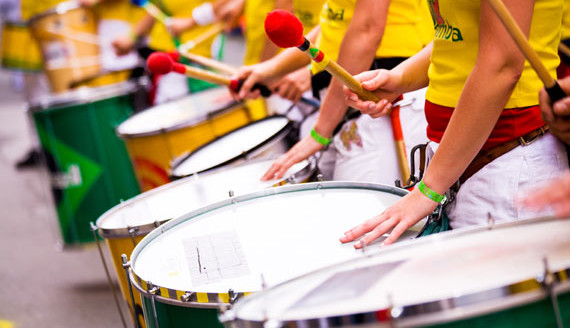Post Project 58: Carnival Drum Light
May 26, 2015
on
on

By Stefan Kalbermatter (Switzerland)
Some time ago the author was asked about options for making a Drum Light for the Carnival festivities. The contraption should light up brightly every time a drum is slammed, providing a nice light effect during late evening and night performances of the Carnival reveler banging the drum, whether solo or in a samba band.
Don't miss any project, take out a free membership to Elektor.POST now!
The initial thought was to have a microphone followed by an amplifier and some kind of monostable multivibrator to make a couple of LEDs light. The idea got rejected because the microphone might catch too much ambient noise during Carnival and could eventually cause the LEDs to light constantly. It seemed another type of triggering device was needed to capture “the drum slam.” A solution was found in a junked alarm clock with a broken case, obviously having crashed to the floor once too many. The built-in piezo buzzer seemed a good candidate for the triggering device. It was quickly dismantled and wired up to an oscilloscope and lo and behold, even gently rapping the piezo element produced nice peaks on the ‘scope. Seemed to work!

Read full article
Hide full article


Discussion (0 comments)